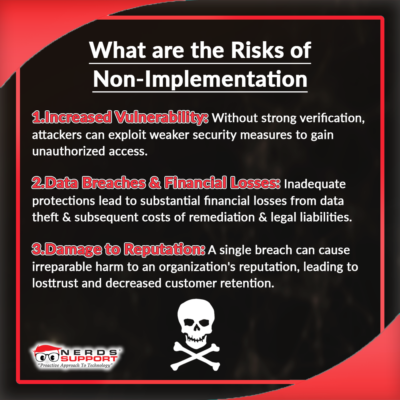In an era where cyber scams are becoming increasingly sophisticated, traditional security models are proving to be incredibly outdated. The concept of “trust, but verify” has given way to a more thorough approach: Zero Trust. This shift is critical in safeguarding sensitive data and systems from emerging threats, including those powered by artificial intelligence.
Understanding Zero Trust Policy
Zero Trust is a security model that operates on the principle that no entity, inside or outside the network, should be trusted by default. Unlike conventional security frameworks that enforce security measures primarily at the perimeter level, Zero Trust assumes that threats can exist both outside and within its boundaries. Therefore, it necessitates rigorous identity verification for every user and device attempting to gain access to resources on the network, regardless of their location.
This approach is particularly crucial when it comes to verifying client end-users, where identity confirmation becomes paramount. Under Zero Trust, every access request is treated as a potential threat until proven otherwise. Verification is continuous and context-based, employing dynamic security policies that integrate user identity, device, location, and other data to make access decisions.
How Can I Apply Zero Trust?
Implementing Zero Trust is a strategic process that integrates several critical components designed to safeguard an organization’s data and resources comprehensively:
- Multi-Factor Authentication (MFA): Users must provide multiple pieces of evidence to verify their identity. These can include something they know (a password), something they have (a security token), and something they are (biometric information).
- Least-Privilege Access: Users are granted the minimum access necessary to perform their tasks. This limits potential damage from breaches or insider threats.
- Microsegmentation: Dividing security perimeters into small zones to maintain separate access for separate parts of the network. If one segment is breached, the others remain secure.
- Real-Time Threat Detection and Response: Continuous monitoring of network activities to identify and respond to threats in real-time using an Endpoint Detection & Response solution (EDR).
This comprehensive framework not only fortifies defenses, but also ensures that security measures are as dynamic as the threats they aim to counter. Implementing Zero Trust is not a one-time activity but a continuous process of adapting and fine-tuning security protocols to defend against evolving cyber threats effectively.
It’s especially important to continuously educate your employees on phishing scams so they know how to spot them effortlessly.
By integrating strict access controls, sophisticated user verification mechanisms, and proactive threat management, organizations can create a resilient security posture that aligns with the principles of Zero Trust.
Why Do I Need it?
The implementation of a Zero Trust policy within any organization brings a multitude of substantial benefits that are crucial for maintaining the integrity and security of modern digital infrastructures. This security framework is fundamentally designed to safeguard against the growing sophistication of cyber threats and adapt seamlessly to the rapid evolution of corporate environments.
Enhanced Security Posture
One of the primary advantages of Zero Trust is its capacity to significantly enhance an organization’s security posture. By adopting a policy where no one is trusted by default—whether they are inside or outside the network—every access request is meticulously verified. This relentless scrutiny helps reduce the overall attack surface, making it more difficult for unauthorized users to exploit network security vulnerabilities. Moreover, continuous verification of access requests ensures that security responses can be dynamically adjusted as new threats are detected, greatly reducing the likelihood of successful breaches and thereby safeguarding critical data and systems more effectively.
Compliance with Regulatory Requirements
In today’s regulatory environment, many industries are subject to strict data protection standards, especially accounting firms during tax season. Regulations such as the System & Organization Controls (SOC) in the accounting industry, the Health Insurance Portability and Accountability Act (HIPAA) in the United States, and various other financial and privacy-related frameworks demand rigorous measures to secure consumer and sensitive information. Zero Trust architecture supports compliance with these regulations by ensuring that access controls are granular and data access is recorded and verifiable. This can prevent unauthorized data exposure and help avoid the substantial fines and legal consequences that result from non-compliance.
Adaptability to Modern Work Environments
The traditional security model of a strong perimeter no longer holds up in today’s work environment where remote work and cloud technologies are prevalent. Zero Trust excels in such decentralized environments by not relying on a traditional boundary. Instead, it verifies each request as if it originates from an open network. This adaptability not only enhances security in diverse operational environments but also facilitates the secure adoption of cloud services, mobility, and remote access technologies, allowing businesses to remain agile and resilient in the face of changing work dynamics.
Countering AI-Driven Threats with Rigorous Verification
The rise of artificial intelligence has not only brought innovations but also new vectors for cyber threats. AI-driven scams, including deepfake technology and sophisticated phishing schemes, are on the rise. These scams use advanced machine learning algorithms to create highly convincing fake audio and visual content, or to automate social engineering attacks at scale, making them particularly dangerous. For instance, deepfake technology can mimic voices and faces with disturbing accuracy, potentially fooling traditional security systems that rely on less stringent authentication methods.
Zero Trust’s rigorous verification demands are uniquely suited to counteract these AI-driven threats. By requiring multi-factor authentication and continually validating the context of each request, Zero Trust makes it significantly harder for AI-generated impersonations to gain even least-privilege access. Whether it’s a video, voice, or text-based communication, the identity verification under Zero Trust requires consistent proof of legitimacy across various checkpoints, thereby minimizing the risk of deception.
What are the Risks of Non-Implementation?
The failure to implement a Zero Trust policy exposes organizations to a spectrum of significant risks that can severely impact their operational integrity, financial stability, and market reputation. These risks are magnified in today’s digital landscape where the nature of threats is not only becoming more sophisticated but also more damaging to long-term business viability.

Neglecting to implement a Zero Trust security model places an organization at a significantly higher risk of sophisticated cyberattacks, costly data breaches, and severe reputational damage. Which is exactly why you need to make sure your partners that manage your sensitive data aren’t treating security like a checkbox.
These factors combine to create a compelling case for adopting Zero Trust as a fundamental component of modern cybersecurity strategies, ensuring that security measures evolve in tandem with the rapidly changing threat landscape.
Need Someone to Do it For You?
Given the complexities involved in implementing and maintaining a Zero Trust architecture, partnering with a Managed Security Services Provider (MSSP) that is committed to robust security practices is crucial. A dedicated MSSP can offer the expertise and resources needed to design, deploy, and manage Zero Trust architectures effectively.
MSSPs provide continuous monitoring and management of security systems and respond to incidents and vulnerabilities. Their deep knowledge of security trends and regulatory requirements ensures that security strategies remain compliant and up-to-date.
Moreover, a partnership with an MSSP that prioritizes client relationships and genuinely cares about their security can offer significant benefits:
- Customized Security Solutions: MSSPs can tailor security measures to fit the unique needs of each client, enhancing the effectiveness of the security posture.
- Proactive Threat Intelligence: With access to broad threat intelligence and the latest security technologies, MSSPs can anticipate and mitigate potential threats before they impact the client.
- Cost-Effectiveness: By outsourcing security needs to an MSSP, organizations can reduce the cost of maintaining an in-house security team while benefiting from top-tier security expertise.
Zero Trust is the Future of Security
The digital landscape is fraught with threats that traditional security measures cannot adequately counter. The Zero Trust model represents a critical evolution in cybersecurity strategy, particularly in verifying the identity of client end-users. By continuously adapting to new threats, particularly those posed by artificial intelligence, and insisting on rigorous verification, Zero Trust helps secure the modern enterprise against a multitude of digital dangers.
Organizations would do well to consider MSSPs that not only implement Zero Trust but also prioritize a genuine commitment to client security. This approach ensures that security is not just a protocol, but a cornerstone of the business relationship, fostering trust and safety in an increasingly insecure digital world.
To effectively ensure your firm is protected against the sophisticated threats of today and tomorrow, consider partnering with an MSSP like Nerds Support. Contact us today to begin implementing a Zero Trust policy that fortifies your firm’s defenses and secures its future!



